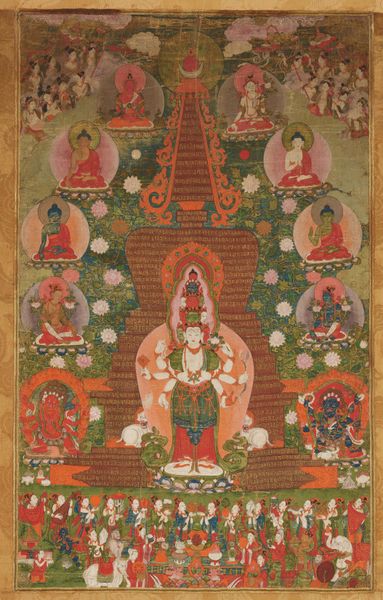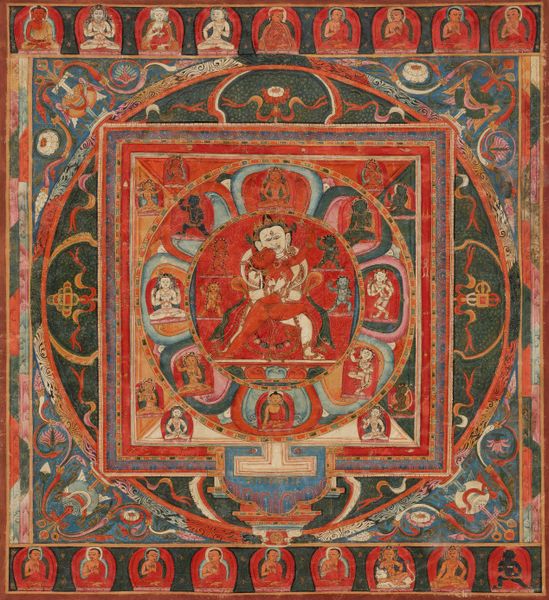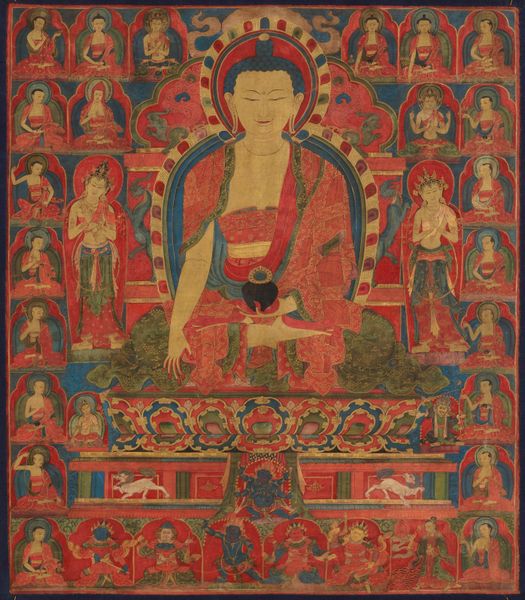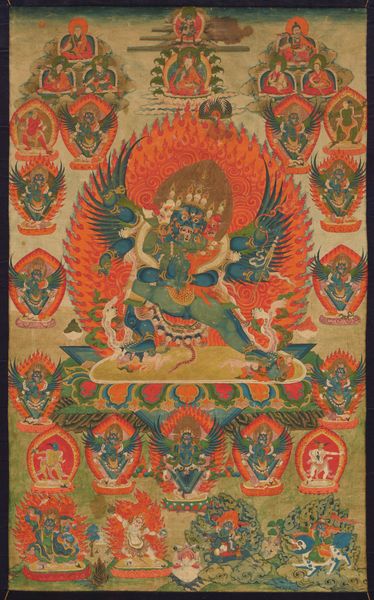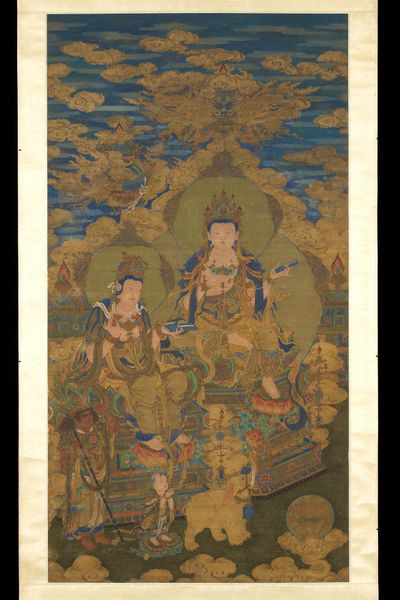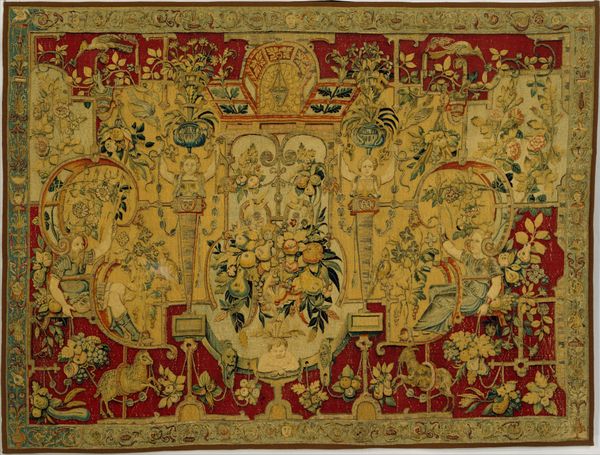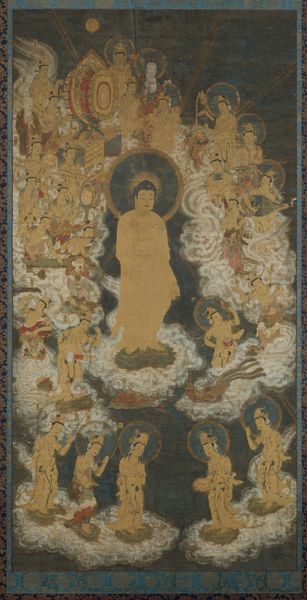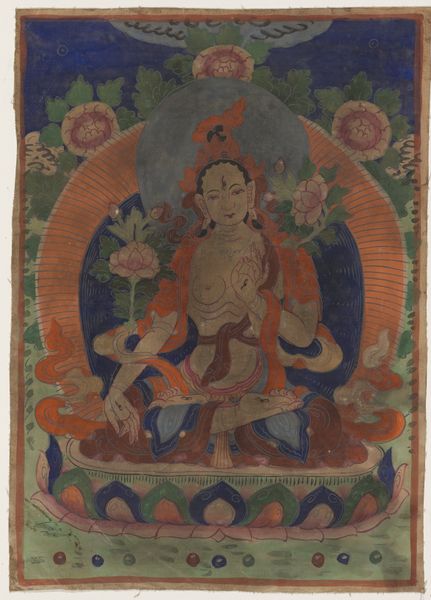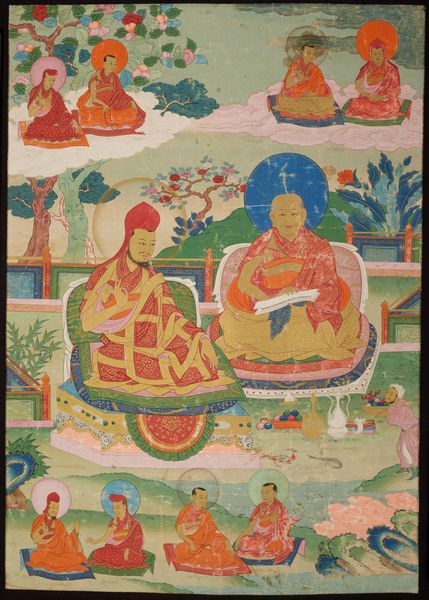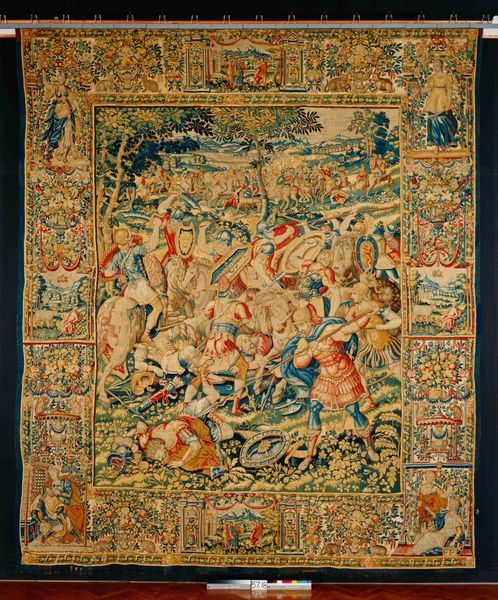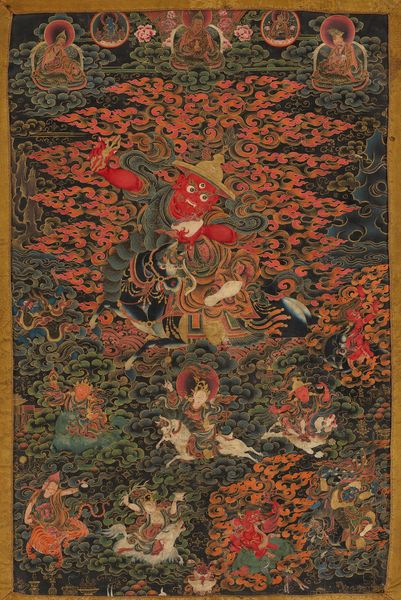
tempera, painting
#
narrative-art
#
tempera
#
painting
#
asian-art
#
landscape
#
figuration
#
miniature
Dimensions: 45 x 28 1/4 in. (114.3 x 71.76 cm)
Copyright: Public Domain
This thangka painting of Shakyamuni Buddha was created by artists from the Tashilhunpo Monastery. Considered the seat of the Panchen Lama, the Monastery was, and still is, a vital cultural and religious institution in Tibet. Thangkas, like this one, were often commissioned by monasteries to teach Buddhist principles to the monastic community and laypeople alike. The imagery creates meaning through visual codes. Notice the central figure of Shakyamuni Buddha in the center, surrounded by scenes from his life and other Buddhist deities. Tibet's religious institutions shaped artistic production. The Monastery influenced the style, iconography, and function of the painting. Art historians can look to records from the monastery itself, religious texts, and oral histories to understand how this painting functioned within the social context of the time. The painting’s meaning is contingent on these specific cultural and institutional factors.
Comments
minneapolisinstituteofart almost 2 years ago
⋮
This rare thanka was painted in the Tashilumpo monastery in central Tibet for a Newari patron from Nepal. From the seventeenth century on, wealthy Nepalese merchants trading with Tibet often visited the famous Tashilumpo monastery, seat of the Panchen Lamas, and commissioned thankas. Although the style of such paintings follows the contemporary Tibetan formula of symmetrically arranged deities in the upper register, the donor figures at the bottom appear as Newari nobility, painted so finely that they approach the exquisite detail of Indian miniature painting. The Nepali, in native dress, are shown engaged in various consecration ceremonies. The mount of this thanka is painted with designs imitating the imperial Chinese brocade typically used to frame thankas belonging to important monasteries; since these expensive silks were reserved for monastic use only, the Newari merchants had to settle for this painted imitation.
Join the conversation
Join millions of artists and users on Artera today and experience the ultimate creative platform.
